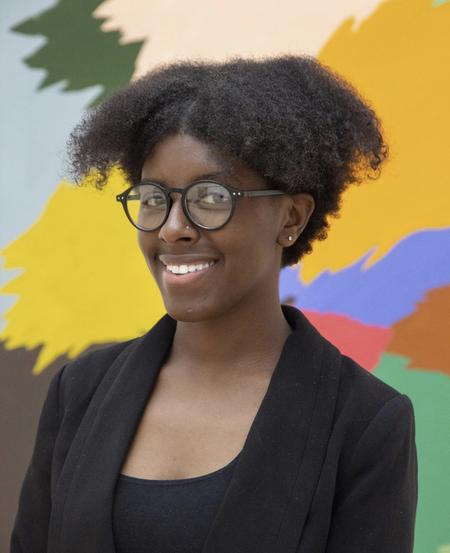New Exhibit at MOCAD Invites You To Take Black Contemporary Art Off The Shelf
The Black Art Library, founded by Detroiter Asmaa Walton, has made the leap from the virtual space to the physical one by turning an Instagram account into a museum exhibition opening this week at the Museum of Contemporary Art Detroit.

Where Asmaa Walton saw an opportunity to fill in a blindspot, she took it — by building a project that put Black visual artists and culture front-and-center.
That’s why she started the Black Art Library, which has jumped from an Instagram presence into the real world with a new exhibition of the same name at the Museum of Contemporary Art Detroit (MOCAD). It opens on February 5 and will be on view through April 18.
The exhibit highlights the “rich legacy of Black art, aesthetics and history,” according to the MOCAD website, by arranging some 200 books and publications pulled from Black contemporary art — exhibition catalogs, children’s books, artist memories, art history texts and other art-related ephemera.
Click the audio player to hear the full conversation with Black Art Library founder Asmaa Walton:

“I knew I wanted to find a way to build up some type of educational resource and merge it with something I love. That’s Black visual art and anything in that realm,” says Black Art Library founder Asmaa Walton, a Detroit native and arts educator.
Browsing online libraries and buying literary works that centered on Black visual arts and artists led to Walton creating an Instagram account dedicated to the titles she collected. In the span of roughly a year, the social media experiment grew from a side project into a growing archive of literary works about Black visual art.
“This will be different from what you’re used to seeing when you go into a museum because, most of the time, you cannot touch anything. It will be set up like a reading room with tables and seating (COVID-19 regulations will be honored),” says Walton. “You’ll actually be able to pick a book off the shelf, take some time looking through it, take pictures of the book. It’s really an opportunity for the books to be used and admired.”
The exhibition’s aesthetic appeal is one component. The other focus is being an accessible resource bank that lends itself to amplifying art history education beyond the Eurocentric narrative, something Walton says was lacking in her education experience as a Detroit Public Schools student and throughout her art studies at Michigan State University.
“I was the only Black student in my art class cohort of about 14 (at MSU). I realized that I was the only one that had gone through a majority of my schooling without having art classes. By the time I got to second grade there was no more art class,” recalls Walton. “Even as I was going through undergrad in art history classes, I wasn’t hearing a lot about Black artists. I realized how huge that gap was in art education in Detroit but also in Black visual arts education at an academic and institution level.”
Trusted, accurate, up-to-date
WDET is here to keep you informed on essential information, news and resources related to COVID-19.
This is a stressful, insecure time for many. So it’s more important than ever for you, our listeners and readers, who are able to donate to keep supporting WDET’s mission. Please make a gift today.
